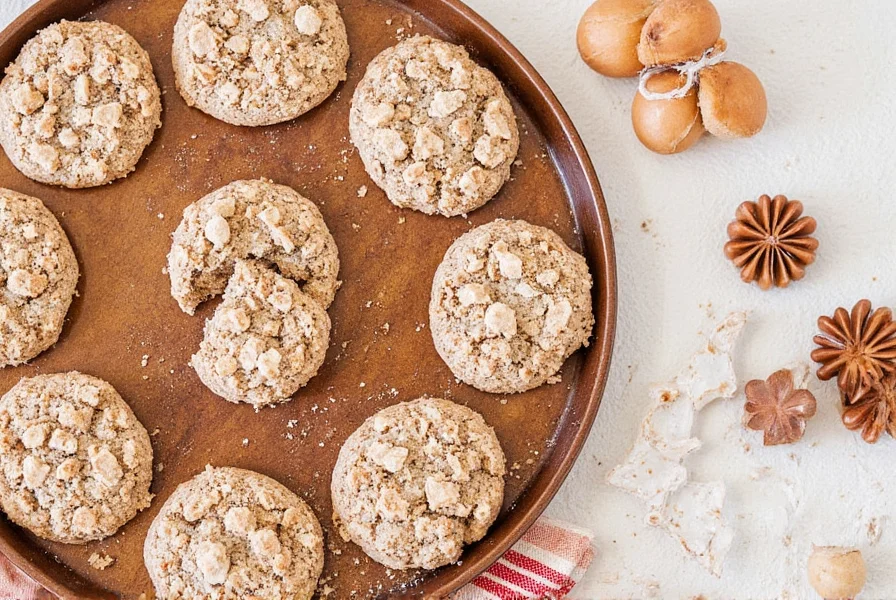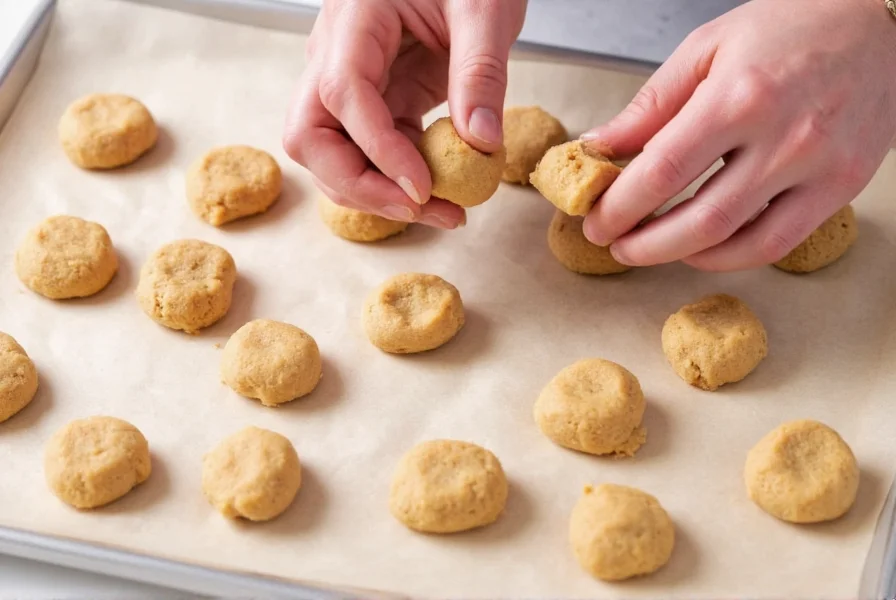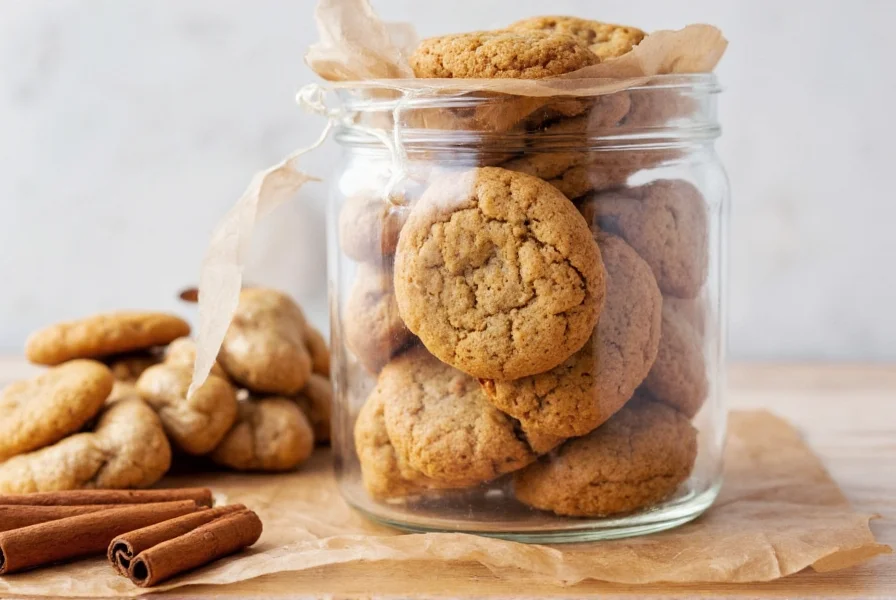Why Your Ginger Cookies Fail (And How to Fix It)
Most home bakers struggle with flat, hard, or flavorless ginger cookies. The culprit? Using fresh ginger instead of ground, skipping dough temperature control, or choosing wrong molasses. Modern recipes often misapply historical techniques – like adding baking soda early as 1845 recipes did – causing uneven spreading. According to A Dash of Science, historical bakers faced similar challenges with inconsistent brick ovens. Today's solution lies in precise ingredient ratios and temperature management.

Ground Ginger vs. Fresh: The Critical Flavor Difference
Using fresh ginger in cookie dough creates moisture imbalance and inconsistent spice distribution. As Chowhound's baking analysis confirms, ground ginger provides milder, evenly distributed heat ideal for cookies. Substitute ratios matter:
| Ginger Type | Flavor Profile | Texture Impact | Cookie Application |
|---|---|---|---|
| Ground ginger | Warm, consistent spice | Dry, even crumb | Essential for traditional cookies |
| Fresh ginger | Sharp, citrusy heat | Wet, creates tunnels | Avoid in cookie dough (use in syrups) |
| Candied ginger | Sweet, concentrated | Chewy pockets | Add chopped as mix-in only |
Step-by-Step: Perfect Ginger Cookies Recipe
This method combines historical accuracy with modern food science. Yields 24 cookies.
Ingredients
- 3 cups all-purpose flour
- 1 tbsp ground ginger (not fresh)
- 2 tsp ground cinnamon
- ¼ tsp ground cloves
- ½ tsp salt
- 6 tbsp unsalted butter, room temperature
- ¾ cup dark brown sugar
- ½ cup unsulphured molasses (not blackstrap)
- 1 large egg
- 2 tsp vanilla extract

Critical Technique Sequence
- Mix dry ingredients: Whisk flour, ginger, cinnamon, cloves, and salt. Historical recipes used minimal spices – modern versions boost ginger for contemporary palates.
- Cream wet ingredients: Beat butter and sugar until light. Add molasses, egg, and vanilla. Never add baking soda here – it causes premature spreading as noted in 1845 recipe analyses.
- Combine: Gradually add dry ingredients. Dough should be slightly sticky but hold shape.
- Chill 24 hours: Refrigerate in airtight container. This hydrates flour and concentrates flavors – a technique validated by The Kitchen Paper's tests.
- Bring to room temperature: Critical step! Cold dough cracks; room-temp dough spreads perfectly. Let sit 45 minutes before shaping.
- Bake at 375°F (190°C): 8-9 minutes until edges set but centers look soft. They'll firm up as they cool.
When to Use This Recipe (and When to Avoid)
| Scenario | Use This Method | Avoid This Method |
|---|---|---|
| Texture goal | Soft, cakey cookies (gingerbread style) | Crisp ginger snaps |
| Occasion | Holiday baking, cookie exchanges | Gluten-free needs (requires major reformulation) |
| Skill level | Intermediate bakers (temperature control critical) | Beginners needing instant results (24h chill required) |
| Ingredient quality | Using unsulphured molasses | Substituting honey or corn syrup |
5 Costly Mistakes Even Experienced Bakers Make
- Molasses confusion: Blackstrap molasses creates bitter cookies. Use unsulphured molasses for balanced sweetness.
- Over-chilling: Dough straight from fridge becomes crumbly. Always return to room temperature pre-baking.
- Incorrect spice ratios: Excess cloves overpower ginger. Stick to 2:1 cinnamon-to-ginger ratio.
- Skipping chilling: 24-hour rest develops complex flavors – don't reduce to 2 hours.
- Misidentifying cookies: As Chowhound clarifies, rolled/cut shapes are gingerbread cookies; small round brittle cookies are snaps.
Everything You Need to Know
No. Fresh ginger contains 80% water that disrupts dough structure, causing spreading and uneven spice. As Chowhound's testing confirms, ¼ teaspoon ground ginger equals 1 teaspoon fresh – but texture differences make substitution impractical for cookies. Use ground ginger exclusively for baking.
Two primary causes: 1) Dough was too cold when baked (chilled dough must return to room temperature), or 2) Using baking powder/soda. Authentic gingerbread cookies contain no leavening agents beyond what's in baking powder-free flour. As The Kitchen Paper documents, room-temperature dough maintains shape while cold dough cracks during baking.
Store in airtight container with parchment between layers at room temperature for 1 week. For extended freshness, include a slice of bread to maintain moisture. Avoid refrigeration which accelerates staling. Freezing is optimal for long-term storage – wrap tightly and thaw at room temperature. Historical bakers used crock storage with ginger root to preserve spice notes, as noted in Herb Society archives.
Gingerbread cookies are soft, cakey, and often cut into shapes using rolled dough. Ginger snaps are brittle, molasses-dominant cookies formed as small balls that crack when bitten. Crucially, snaps contain no egg and use higher molasses ratios. As Chowhound specifies, "if it holds a cut shape, it's gingerbread; if it snaps when bent, it's a snap."
The term "gingerbread" derives from Old French "gingembras" (from Latin "zingiber"), but historically referred to preserved fruits or honey cakes. As Herb Society explains, "gingerbread has never actually been bread and rarely contained ginger." Medieval recipes used honey and breadcrumbs, with ginger added later as the spice trade expanded. The name persisted despite ingredient changes.










 浙公网安备
33010002000092号
浙公网安备
33010002000092号 浙B2-20120091-4
浙B2-20120091-4